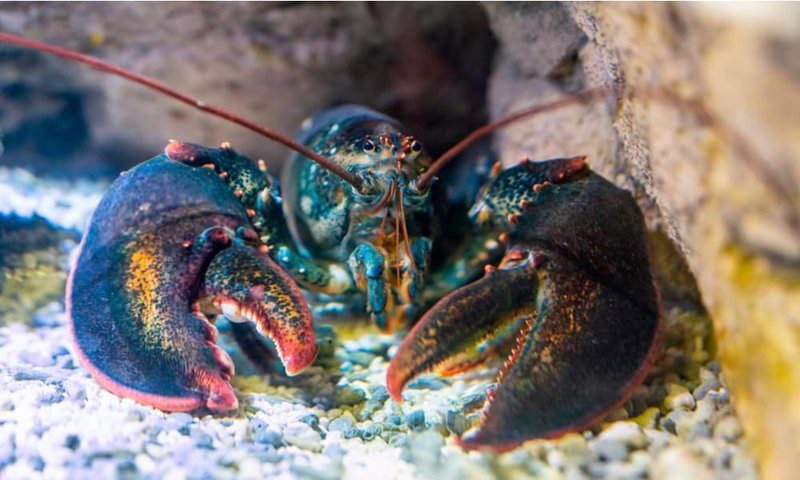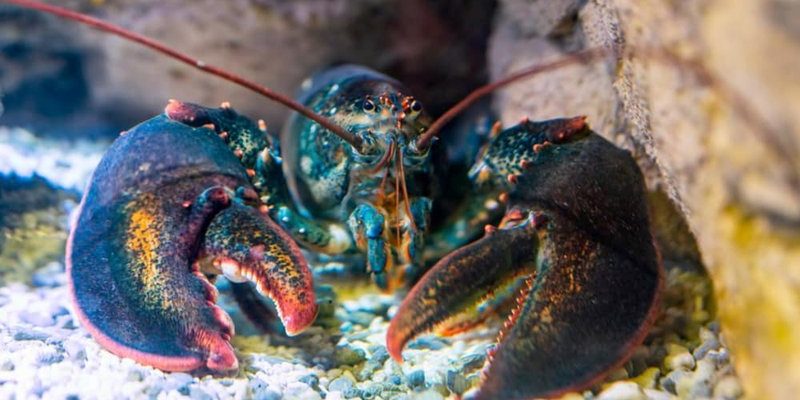
Lobsters are like the scavengers of the sea, but they’re not just picking off leftovers. Their diet is varied and colorful, reflecting their roles in the ecosystem. Imagine them roaming the ocean floor, using their keen sense of smell and sharp pincers to find food. Learning more about their feeding habits reveals how these crustaceans contribute to their environment and, ultimately, to our culinary experiences.
What Do Lobsters Eat?
Lobsters are omnivores, which means they eat both plants and animals. Their diets can vary based on their habitat and available food sources. Typically, they enjoy a mix of:
- Small fish
- Shellfish like clams and mussels
- Seaweed and other aquatic plants
- Dead marine animals
You might be wondering how lobsters find all this food. They have an incredible sense of smell, which helps them detect food from quite a distance. While exploring the ocean floor, they use their antennae to sense chemicals released by potential meals. It’s like having a built-in GPS for food!
The feeding habits of lobsters change depending on their size and age. Young lobsters tend to eat smaller prey, like plankton, while adults prefer larger items. As they grow, they adapt to what’s available in their environment. This flexibility is key to their survival in various ocean habitats.
How Do Lobsters Hunt?
Lobsters are not the speediest hunters. Instead of chasing fast prey, they employ a strategy that relies on patience and cunning. They often hide in crevices or under rocks, waiting for unsuspecting prey to come close. When the opportunity arises, they quickly use their powerful pincers to grab their meal.
Believe it or not, lobsters can also scavenge, feeding on dead animals on the ocean floor. This ability to eat what’s available helps maintain a balanced ecosystem. By consuming dead fish and other creatures, they play a vital role in cleaning up their environment.
Interestingly, lobsters also exhibit a behavior known as “chemoreception.” They can taste their food even before they grab it. The tiny bristles on their legs and antennae pick up scent particles, allowing them to assess whether a potential meal is worth the effort. Talk about a unique dining experience!
Feeding Behavior and Social Interaction
Lobsters are mostly solitary creatures, but that doesn’t mean they don’t interact with each other during feeding times. When food is abundant, you might find multiple lobsters gathering in the same area. This can lead to some interesting social dynamics. They don’t just compete for food; they also engage in displays of strength or dominance.
During these interactions, lobsters may use their claws to establish hierarchy. A larger lobster can intimidate smaller ones, claiming prime feeding spots. This behavior emphasizes the importance of size and strength in the lobster world.
Here’s the thing: while feeding, lobsters can be quite aggressive. If food is scarce, they may even resort to cannibalism! It’s a harsh reality of their underwater lives, but it underscores their adaptability when it comes to survival.
Impact of Diet on Lobster Growth and Reproduction
The diet of a lobster has a significant impact on its growth and ability to reproduce. A well-fed lobster grows faster and is more likely to reach maturity, which is crucial for ensuring the continuation of the species. Adequate nutrition allows lobsters to develop healthy shells, strong claws, and the energy needed for reproduction.
During their reproductive cycle, female lobsters require specific nutrients to produce viable eggs. Their diet must be rich in protein and other essential elements. When females are well-fed, they can produce thousands of eggs, greatly enhancing their chances of offspring survival.
Conversely, if lobsters can’t find enough food, their growth may slow down, and they might not reproduce successfully. This highlights the importance of a balanced ecosystem, where food sources must be preserved to support not just lobsters, but also the entire marine life network.
Common Food Sources in the Wild
In the wild, lobsters have plenty of food sources to choose from. Here’s a closer look at some common options:
- Crustaceans: Lobsters love crabs, shrimp, and other smaller crustaceans. They often scavenge for these creatures along the ocean floor.
- Shellfish: Clams and mussels are favorites, providing a rich source of nutrition.
- Fish: Small fish can be a tasty snack for lobsters, especially during their hunting expeditions.
- Plant Matter: Seaweed and other aquatic plants make up a smaller portion of their diet, but they are still important for overall nutrition.
You might notice that lobsters are quite opportunistic eaters. This adaptability allows them to thrive in various habitats, whether it’s rocky shores or sandy bottoms. Their feeding habits can change based on what’s readily available, which is a big advantage in the ever-changing ocean environment.
The diet and feeding habits of lobsters reveal a lot about their role in the marine ecosystem. From being skilled hunters to opportunistic scavengers, lobsters adapt their eating habits based on availability and their own needs. Their ability to find food plays a crucial role in their growth and reproductive success, not to mention their contribution to keeping the ocean clean.
Understanding these fascinating creatures opens up a whole new appreciation for them—whether you’re cooking them for dinner or observing them in the wild. Lobsters are more than just a tasty meal; they’re an essential part of underwater life. So next time you enjoy a lobster dish, remember the journey it took to get to your plate!

